Edit, Download, and Sign the Washington State Joint Range of Motion Evaluation Chart
Form
eSign
Add Annotation
Share Form
How do I fill this out?
To fill out this form, you need to mark the existing limitation of motion for each affected joint. You can draw a line on the figures or denote the range in degrees. Ensure to include a complete description of all affected joints in the narrative summary.

How to fill out the Washington State Joint Range of Motion Evaluation Chart?
1
Indicate the patient's name and client identification number.
2
Mark the existing limitation of motion for each affected joint by drawing or noting degrees.
3
Provide a complete description of all affected joints in the narrative summary.
4
If the range of motion is normal for all joints, comment on this in the narrative summary.
5
Sign and date the document after completing the examination details.
Who needs the Washington State Joint Range of Motion Evaluation Chart?
1
Medical professionals evaluating a patient's joint mobility.
2
Patients undergoing physical or occupational therapy.
3
Insurance companies requiring documentation of a patient's condition.
4
Legal professionals handling injury or disability claims.
5
Researchers studying joint mobility limitations.
How PrintFriendly Works
At PrintFriendly.com, you can edit, sign, share, and download the Washington State Joint Range of Motion Evaluation Chart along with hundreds of thousands of other documents. Our platform helps you seamlessly edit PDFs and other documents online. You can edit our large library of pre-existing files and upload your own documents. Managing PDFs has never been easier.

Edit your Washington State Joint Range of Motion Evaluation Chart online.
With PrintFriendly, you can easily edit the Joint Range of Motion Evaluation Chart. Use our intuitive PDF tools to enter information, adjust ranges, and add comments directly into the form. It's simple to make precise edits and ensure all necessary details are included.

Add your legally-binding signature.
PrintFriendly allows you to securely sign the Joint Range of Motion Evaluation Chart electronically. Use our PDF editor to add your signature directly to the form. This feature ensures that the document is fully certified and ready for submission.
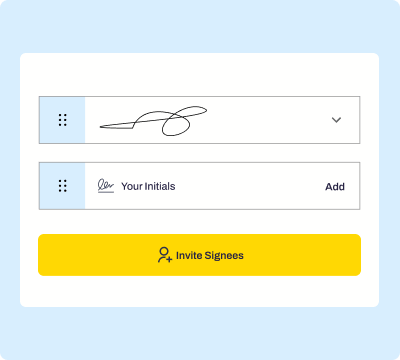
Share your form instantly.
Sharing your completed Joint Range of Motion Evaluation Chart is simple with PrintFriendly. Use our platform to send the document via email or generate a shareable link. This ensures that your file can be easily accessed and reviewed by others.
How do I edit the Washington State Joint Range of Motion Evaluation Chart online?
With PrintFriendly, you can easily edit the Joint Range of Motion Evaluation Chart. Use our intuitive PDF tools to enter information, adjust ranges, and add comments directly into the form. It's simple to make precise edits and ensure all necessary details are included.
1
Open the Joint Range of Motion Evaluation Chart on PrintFriendly.
2
Use the PDF editor to enter the patient's details and mark the limitations for each joint.
3
Draw lines or note the degrees of motion directly on the document.
4
Include a thorough narrative summary of the affected joints.
5
Save your changes and export the edited file for submission.

What are the instructions for submitting this form?
To submit the Joint Range of Motion Evaluation Chart, provide all required details and ensure the form is signed. You can submit the form via email, fax, or by mailing it to the Washington State Department of Social and Health Services. For submissions, use the following contact details: Email: medical.records@dshs.wa.gov, Fax: (360) 555-1234, Mailing Address: DSHS Medical Records, PO Box 456, Olympia, WA 98504. Ensure to keep a copy of the submitted form for your records.
What are the important dates for this form in 2024 and 2025?
Ensure to complete and submit the Joint Range of Motion Evaluation Chart as required based on individual cases and examinations.

What is the purpose of this form?
The purpose of the Washington State Joint Range of Motion Evaluation Chart is to accurately document the limitations in a patient's joint mobility. This form helps medical professionals provide a detailed assessment of each affected joint, while ensuring that the information is systematically captured for further analysis or documentation. Additionally, it aids in communicating patient conditions to relevant entities, such as therapists, insurance companies, and legal professionals.

Tell me about this form and its components and fields line-by-line.

- 1. Back: Includes flexibility in lateral, extension, and flexion directions measured in degrees.
- 2. Neck: Covers extension, flexion, lateral bending, and rotation measured in degrees.
- 3. Hip: Captures backward extension, flexion, adduction, and abduction with knee flexed or extended measured in degrees.
- 4. Knee: Measures knee flexion in degrees.
- 5. Shoulder: Documents abduction, adduction, flexion, and extension measured in degrees.
- 6. Elbow: Includes extension and flexion measured in degrees.
- 7. Forearm: Captures pronation and supination measured in degrees.
- 8. Ankle: Measures inversion, eversion, plantar flexion, and dorsal flexion measured in degrees.
- 9. Wrist: Documents radial and ulnar movements, extension, and flexion measured in degrees.
- 10. Thumb: Covers the movement in MP and IP joints measured in degrees.
What happens if I fail to submit this form?
Failure to submit the Joint Range of Motion Evaluation Chart may result in incomplete patient records and potential delays in necessary treatments or insurance claims.
- Incomplete Medical Records: Patient's joint mobility issues may not be adequately documented.
- Delayed Treatments: Lack of information could hinder timely medical interventions.
- Insurance Claim Issues: Incomplete documentation may affect claim processing and approvals.
How do I know when to use this form?

- 1. Medical Evaluations: To assess joint mobility for diagnosis or treatment planning.
- 2. Physical Therapy: To document progress and limitations during therapy sessions.
- 3. Insurance Claims: To provide detailed information for processing claims related to joint issues.
- 4. Legal Cases: To support injury or disability claims in legal proceedings.
- 5. Research Studies: To collect data on joint mobility limitations for clinical research.
Frequently Asked Questions
How do I fill out the Joint Range of Motion Evaluation Chart?
Indicate the range of motion limitations by drawing lines or noting degrees, and provide a narrative summary of all affected joints.
Can I edit the Joint Range of Motion Evaluation Chart on PrintFriendly?
Yes, use our PDF editor to easily enter information and adjust the ranges directly on the form.
Is it possible to sign the Joint Range of Motion Evaluation Chart electronically?
Yes, you can sign the form electronically using PrintFriendly's PDF signing feature.
How can I share the completed Joint Range of Motion Evaluation Chart?
You can share the document via email or generate a shareable link using PrintFriendly.
What should I do if all joints have a normal range of motion?
Comment on the normal range of motion in the narrative summary section of the form.
Can I draw lines to indicate the range of motion?
Yes, you can draw lines on the figures or notate the chart in degrees to indicate the range of motion.
Who needs to use the Joint Range of Motion Evaluation Chart?
Medical professionals, patients, insurance companies, legal professionals, and researchers may need to use this form.
Is it possible to add comments on the form?
Yes, you can add comments and provide a detailed narrative summary in the form.
Where do I indicate the date of examination?
The date of examination should be indicated at the bottom of the form.
Can I export the edited Joint Range of Motion Evaluation Chart?
Yes, you can save your changes and export the edited file for submission through PrintFriendly.
Related Documents - Joint Motion Eval Chart
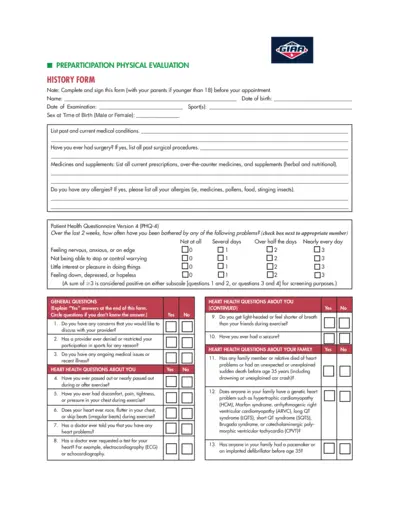
Preparticipation Physical Evaluation Form
The Preparticipation Physical Evaluation Form is used to assess the physical health and fitness of individuals before they participate in sports activities. It covers medical history, heart health, bone and joint health, and other relevant medical questions.
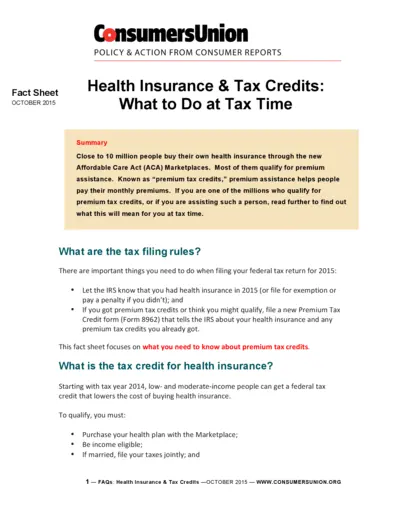
Health Insurance Tax Credits Guide 2015
This document provides a comprehensive guide on health insurance and premium tax credits for the 2015 tax year. It explains the tax filing rules, eligibility criteria, and detailed instructions for claiming and reporting premium tax credits. Essential for individuals who bought health insurance through the ACA Marketplaces.

TSP-77 Partial Withdrawal Request for Separated Employees
The TSP-77 form is used by separated employees to request a partial withdrawal from their Thrift Savings Plan account. It includes instructions for completing the form, certification, and notarization requirements. The form must be filled out completely and submitted along with necessary supporting documents.

Ray's Food Place Donation Request Form Details
This file contains the donation request form for Ray's Food Place. Complete the general information section and follow the guidelines to submit your donation request at least 30 days in advance. The form includes fields for organization details and donation specifics.

Pastoral Ministry Evaluation Form for Board of Elders
This evaluation form is designed for the Board of Elders to assess and provide feedback on a pastor's ministry. It aims to offer affirmation and identify areas for improvement. The form covers preaching, worship leading, pastoral care, administration, and more.
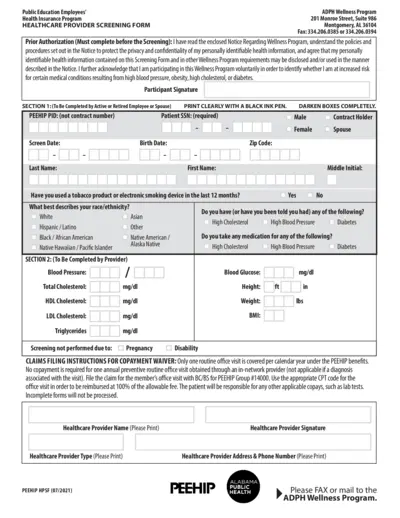
Health Provider Screening Form for PEEHIP Healthcare
This file contains the Health Provider Screening Form for PEEHIP public education employees and spouses. It includes instructions on how to fill out the form for wellness program participation. The form collects personal, medical, and screening details to assess wellness.

Common Law Marriage Declaration Form for FEHB Program
This form is used to declare a common law marriage for the purpose of enrolling a spouse under the Federal Employees Health Benefits (FEHB) Program. It requires personal details, marriage information, and additional documentation. Submission instructions and legal implications are included.
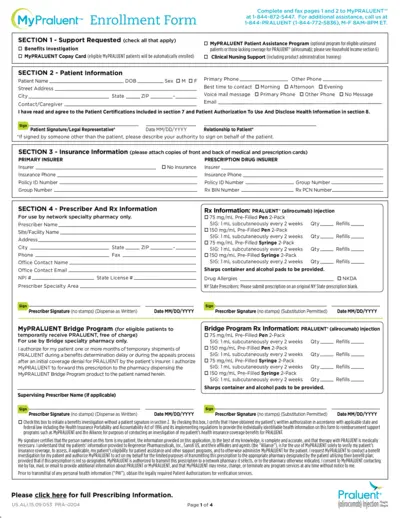
MyPRALUENT™ Enrollment Form Instructions and Details
This document provides comprehensive instructions and details for enrolling in the MyPRALUENT™ program, including benefits, patient assistance, and clinical support. It outlines the required patient, insurance, and prescriber information, as well as the steps for treatment verification and household income documentation.
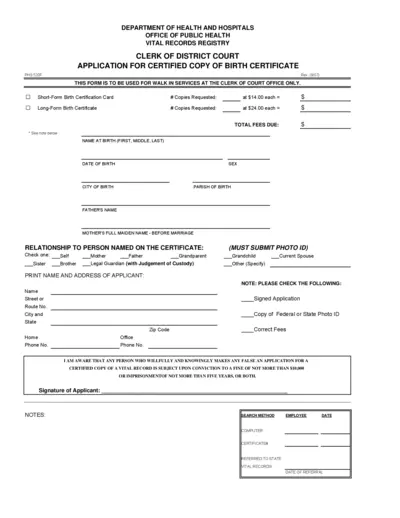
Application for Certified Copy of Birth Certificate
This form is used to request a certified copy of a birth certificate from the Clerk of Court Office. It includes details about the applicant, the person named on the certificate, and requires a photo ID and the correct fee. This form is only for walk-in services.
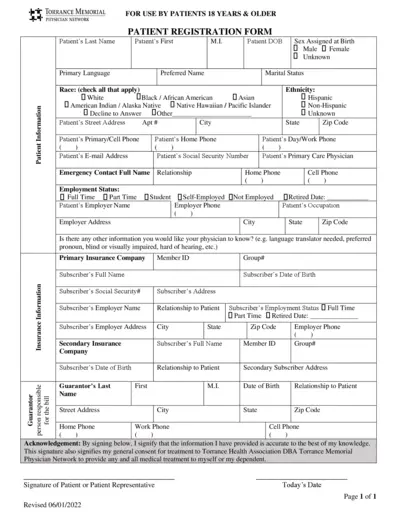
Torrance Memorial Physician Network Forms for Patients 18+
This file contains important forms for patients 18 years and older registered with Torrance Memorial Physician Network. It includes patient registration, acknowledgment of receipt of privacy practices, and financial & assignment of benefits policy forms. Complete these forms to ensure your medical records are up-to-date and to understand your financial responsibilities.
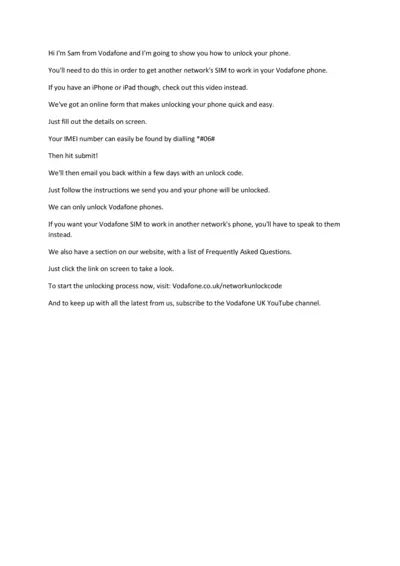
Vodafone Phone Unlocking Guide: Steps to Unlock Your Phone
This guide from Vodafone provides a step-by-step process to unlock your phone. Learn how to obtain your unlock code by filling out an online form. Follow the instructions to complete the unlocking process.
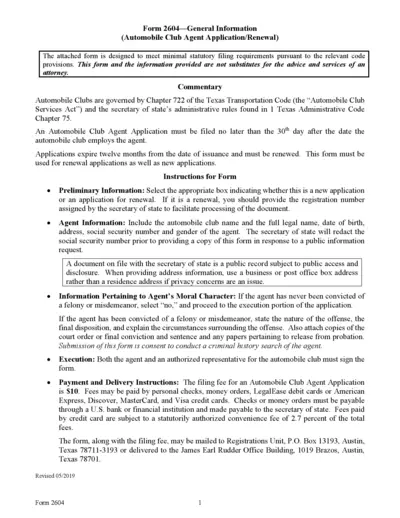
Texas Automobile Club Agent Application Form
This file is the Texas Automobile Club Agent Application or Renewal form, which must be submitted within 30 days after hiring an agent. The form includes fields for agent identification, moral character information, and requires signature from both the agent and an authorized representative of the automobile club. Filing fees and submission instructions are also provided.